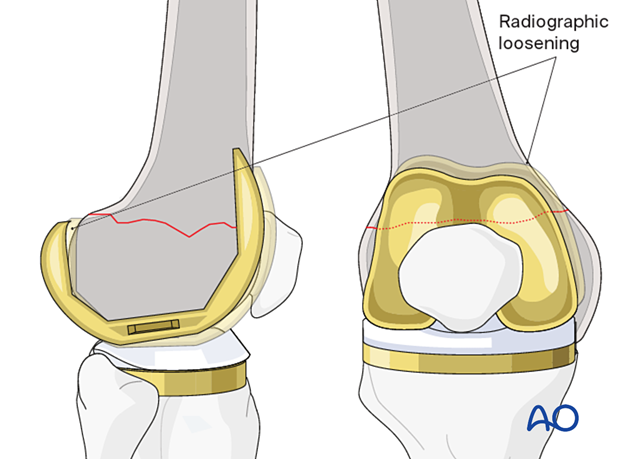Fracture around a loose femoral component with good bone stock
General considerations
These fractures (classified by UCPF as V.3-B2) occur when the femoral component has loosened either at the time of injury or because of preexisting osteolysis. Therefore, surgeons need to consider if a V.3-B1 fracture should in fact be classified as V.3-B2.

Etiology
Commonly these occur following a simple fall from standing height.
Occasionally, more active patients might sustain a high energy fracture.
Clinical signs
- Pain
- Swelling
- Deformity
- Preceding pain or disfunction
Imaging
Plain X-rays remain the first line of investigation.
CT Scan can help to assess possible fracture extension to the implant interface.













